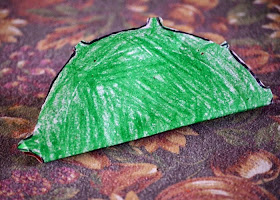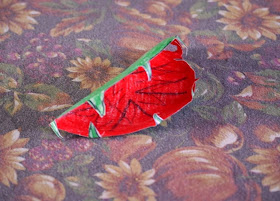Easy to Make Paper Plant Models
Over the past 12 weeks or so, our second grader has studied plants both at home and with our homeschool co-op. Considering I am the teacher for both, he was able to delve deeply for an eight year old, into the world of botany.
Two of my favorite hands on learning activities were in the form of paper plant models. Both the flower model and Venus Fly Trap model were a hit with my son and the co-op class.
Paper Flower Model
During one of our co-op class, I led the students in a hands on activity creating paper flower models. We used coffee filters, construction paper, chenille stems (pipe cleaners), and corn meal to create realistic flower models. The previous week, we had completed a flower dissection lab. This paper flower model served as a review for the different parts of a flower.
The inspiration for this paper flower model was found here and here.
First students folded and trimmed a single coffee filter. The filter was folded like a paper snowflake would be folded. Students then cut a rounded top. To help our students, I drew a curved line as a cutting guide. Older students would be able to cut on their own. A small hole was cut at the bottom tip. This hole would be used later for assembly.
Students cut out a green sepal and placed a hole for assembly in one end.
Next I led students in bending the chenille stems into pistils and stamens.
The stamens were created by folding the chenille stem in half, creating a v shape. The tips of the v were folded twice to make a more substantial end to represent the anthers. Each student did this twice with yellow chenille stems to create four individual filaments with four anthers at the tips. Anthers were then dipped in glue and corn meal. The corn meal represented the pollen. Setting the stamens aside, we then bent one chenille stem into a pistil.
Again, students bent a chenille stem in half. Instead of a finished v shape, students attempted to make a rain drop shape with a long, tapered end. The tapered end would then be twisted and secured to create a shape like a stigma. Our students used one long, white chenille stem to make their pistils.
To assemble all the pieces, students were given a shorter chenille stem. (Actually, we used real pipe cleaners for this part because I had a bag on hand which belonged to my grandfather, but a chenille stem will work just fine.)
Students placed the sepal on the table. Opening their coffee filter petal piece, students were directed to line up the two holes. By holding the two stamen pieces at the center or bottom point of the v, students were able to place the rounded pistil bottom into the point. Each student then threaded the smaller pipe cleaner through the curved pistil stopping mid way. Taking the two ends of the pipe cleaner, students wrapped and twisted the pipe cleaner around the bases of the pistil and the stamen pieces. Now, students could hold all three pieces by the one pipe cleaner. This small section of pipe cleaner was inserted into the coffee filter hole and then the sepal hole. By twisting the pipe cleaner into a knot, students were able to secure the entire paper flower model.
Afterward, students colored, cut, and assembled paper bees to help pollinate the flowers. Students enjoyed flying their bees into the flower.
To add a visual diagram on how pollination works check this link. Also, last spring two of my children participated in a hands on pollination activity. {You can read about it here.}
Paper Venus Fly Trap Model
For another co-op class, I led the students through making their own Venus Fly Trap paper model. Inspiration was found here and here.
Our Venus Fly Traps were made from a paper plate.
Turning the plate over, students colored the back side green. I had already traced a jagged pattern on the outside edge of the plate. For ease of coloring, students colored both sides before cutting along the edge.
Flipping the paper plate right side up (like if you were going to eat off of it) students colored this side red. Within the middle of the red side, students used black crayons to create trigger hairs on the paper model. {These trigger hairs are sensitive parts of the Venus Fly Trap which tell the plant to close their leaf over an insect.}
Next students cut along the marked edge creating the pointed edge of the leaf.
Finally, students folded their paper plate in half.
Insects were made from small bits of black construction paper. Students enjoyed making their Venus Fly Trap models eat them.







No comments:
Post a Comment